
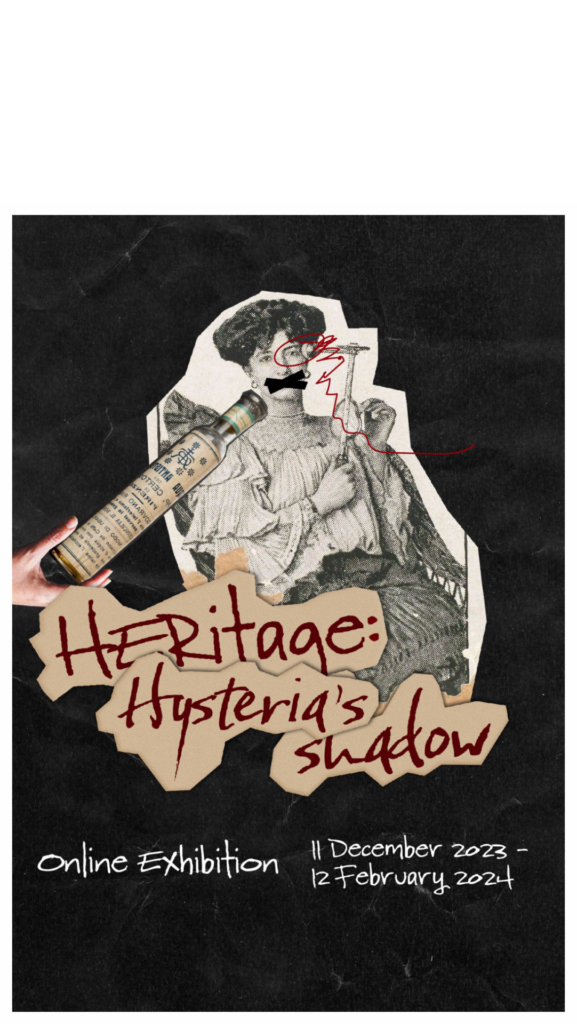
HERitage:
Hysteria’s Shadow
More than 4 in 5 women have felt ignored by healthcare professionals. Read on to discover the connection between this gendered prejudice and the historical diagnosis of hysteria…
Women’s Health Strategy for England report
https://evidence.nihr.ac.uk/collection/womens-health-why-women-feel-unheard/ (2022)
Department of Health and Social Care
INTRODUCTION

Hysteria was used as an umbrella term for under-researched symptoms of mental illnesses, such as anxiety or depression, however it was only applied to women. ‘Hysteria’ controlled, criticized and profited from women’s bodies and minds. This umbrella term arose from misunderstandings around hormones.
It was also used to ‘diagnose’ women who did not follow gender norms. Many women still experience this outdated prejudice at the doctors, and companies still profit from women’s hormones. This is rooted in hysteria.
Hysteria lurks as a shadow in the treatment of women’s health. Our exhibition uses The Science Museum’s collection to draw attention to this link and encourage change.
Patent medicine

Patent medicines are trademarked medicines which do not require a doctor’s prescription to buy. From the 18th century to our modern day, patent medicines have been used to profit off misconceptions about female biology.
In the past, patent medicines often did mot explicitly state that they contained dangerous substances, such as:
Cannabis
Alcohol
Chloroform
Morphine
Whilst patent medicines face more regulations today, they still profit off of the lack of legitimate, research backed medicine available for women’s health issues.
Imagine…

Imagine you are a woman in the 1800s experiencing depression or anxiety, blindness or deafness, or perhaps you are simply an advocate for equal rights for women. Maybe you have decided to remain unmarried, or your partner has passed away.
These were all considered symptoms of hysteria, and you may have been prescribed one of the following patent ‘medicines’.
PATENT MEDICINES
Anti-hysteria Water in a Glass Bottle
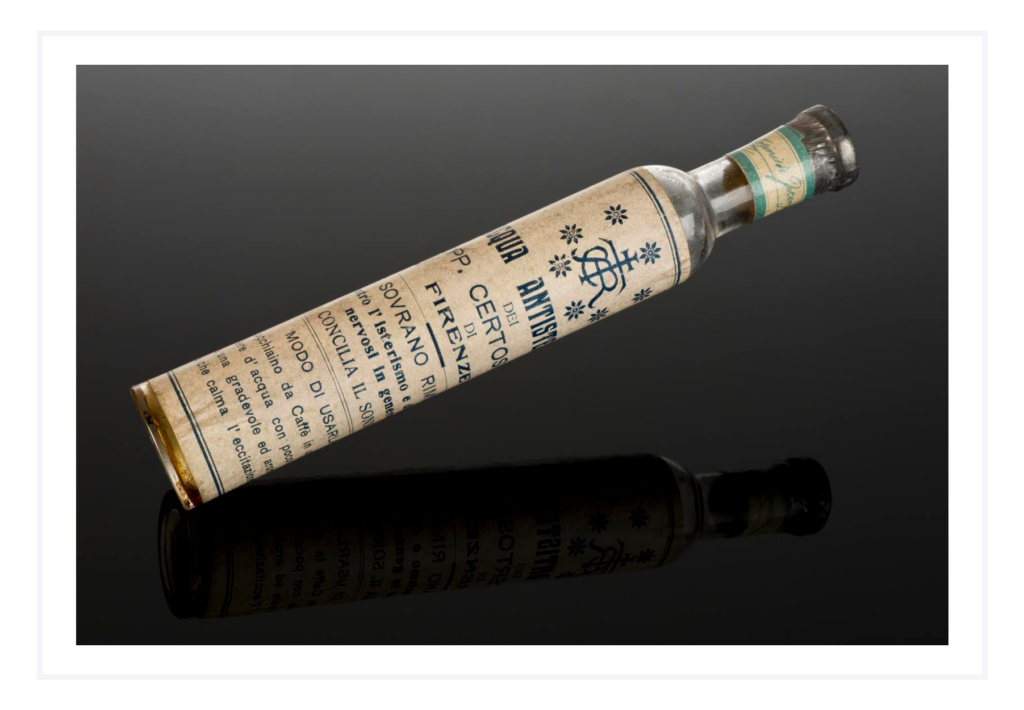
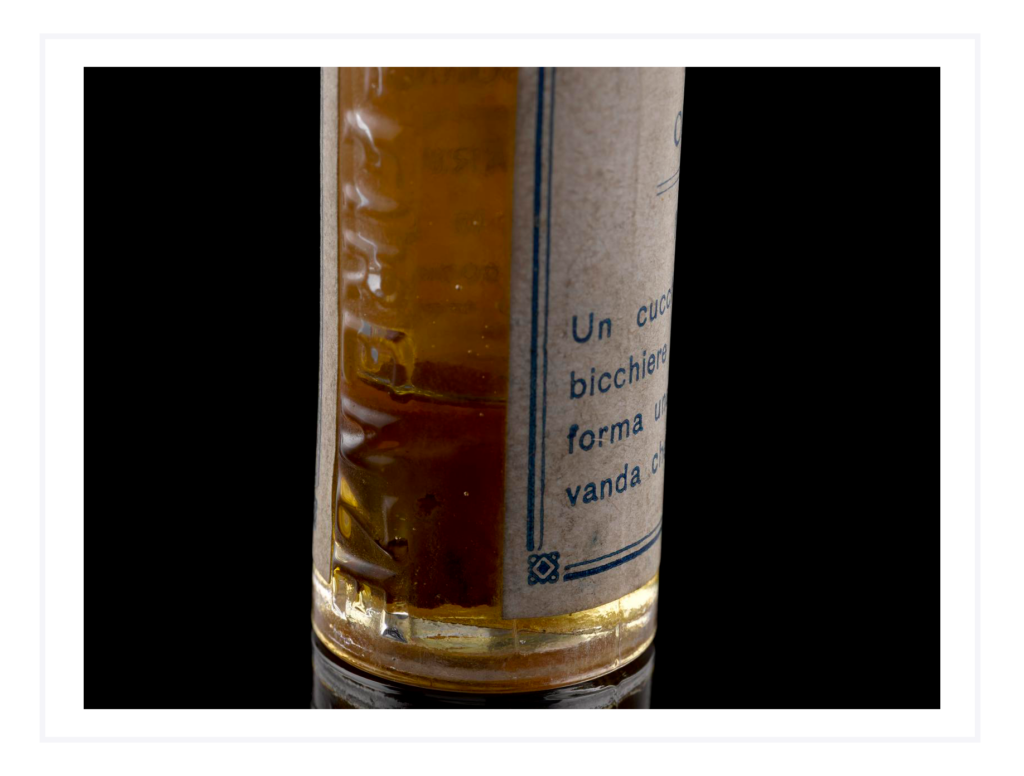
Glass bottle containing the patent medicine ‘anti-hysteria water’. You would have been prescribed this drink if you displayed ‘nervous excitation’. As a woman in the 19th century, pharmaceutical companies would have profited from your hormones
Anti-Hysteria Water
Carthusian Monastery
Certosa, Italy
1850-1920
PATENT MEDICINES
Dr John Hooper’s Female pills
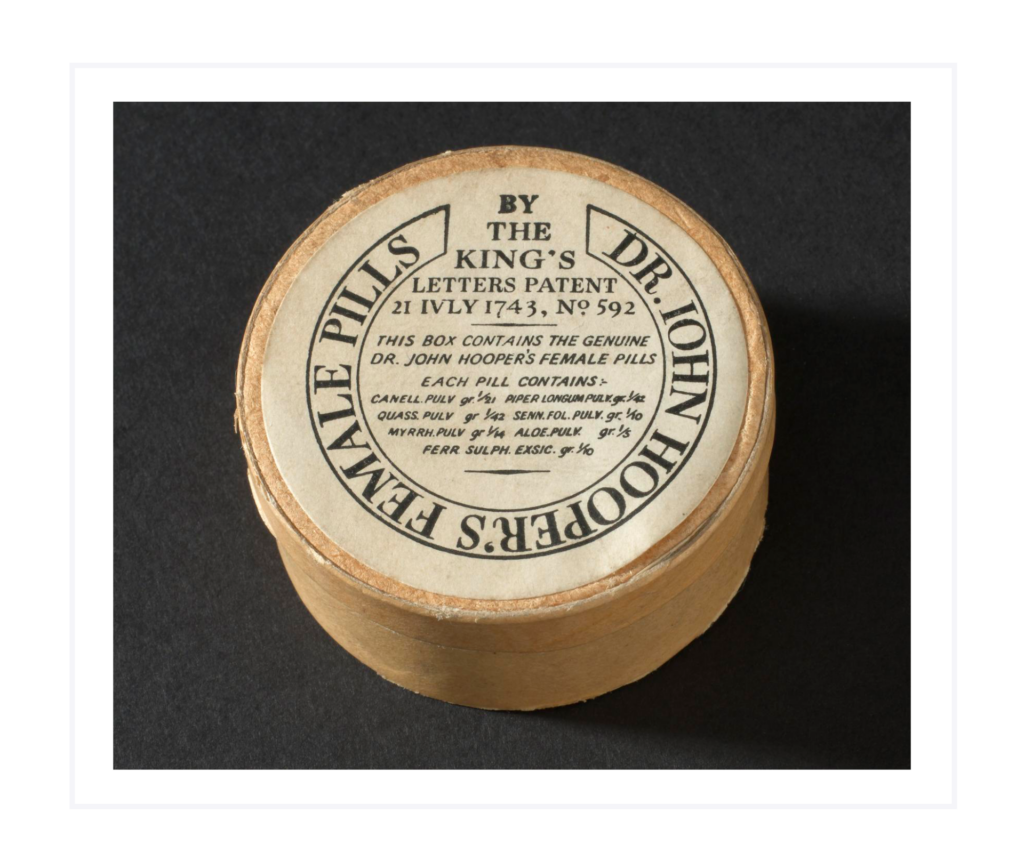
Hysteria was seen as a female problem. Dr John Hooper provided a ‘female’ solution in 1743 through these pills. You would have been prescribed this medicine if you were anxious, depressed, unwed, or experiencing loss of the senses.
Box for Dr John Hooper’s Female pills
United Kingdom
1900-1950
PATENT MEDICINES
Baldwin’s Nervous Pills
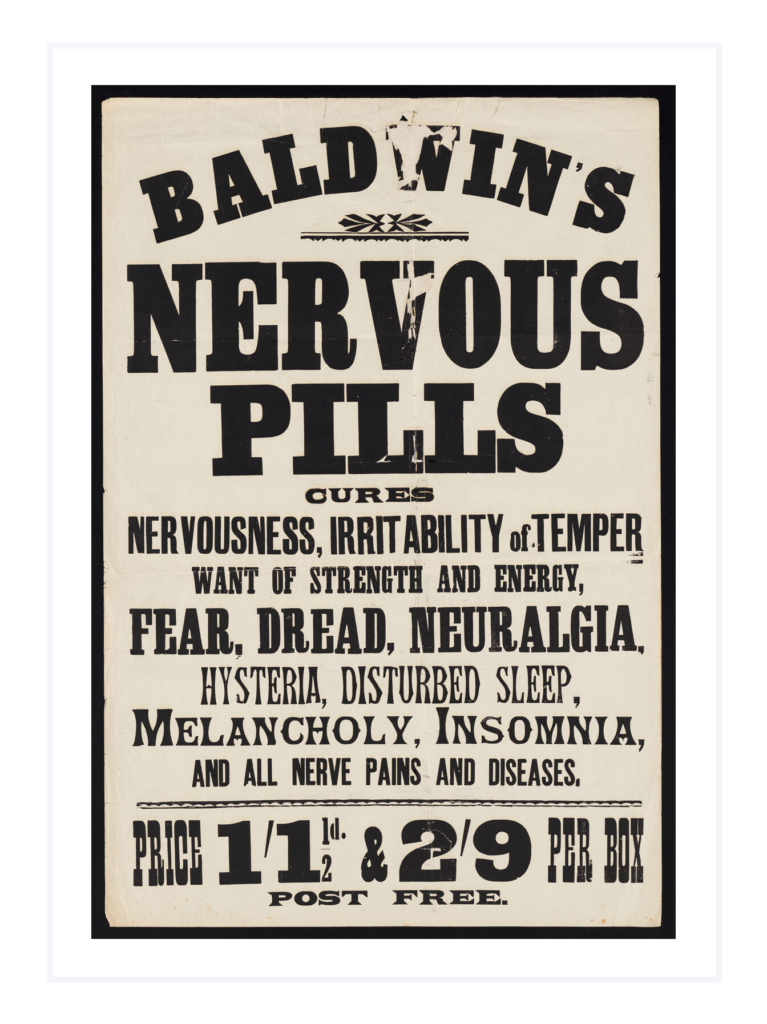
In late 1890 or early 1900, ‘Baldwin’s nerve pills’ were made to treat hysteria. You would have been prescribed this medicine if you had these symptoms such as nervous,tension, hysteria, and almost all nerve pain and related diseases
Poster advertising G. Baldwin’s pillsLondon,
United Kingdom
Possibly late 1890s or early 1900s
Image source:https://wellcomecollection.org/works/g2847rfv/images?id=bebzbg7y
A TREATMENT INSTRUMENT
“Veedee” Vibratory Massager
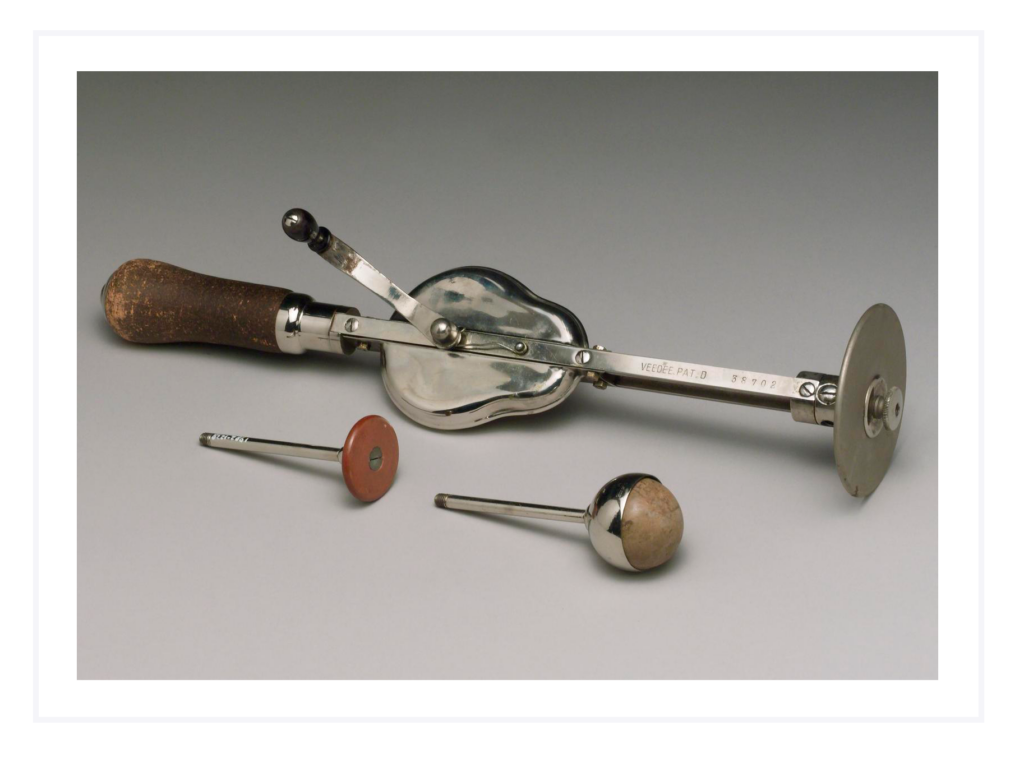
During the late 1800s in Germany, you would use this instrument to treat female ‘hysteria,’ which was considered effective for combating almost any affliction. You would be claimed that it could cure colds, digestive complaints, and flatulence through ‘curative vibration.’
“Veedee” vibratory massager in original box
German
early 20th century
Image source:https://collection.sciencemuseumgroup.org.uk/objects/co137752/veedee-vibratory-massager-vibrator
A TRADITIONAL REMEDY
Middle Eastern Herbs
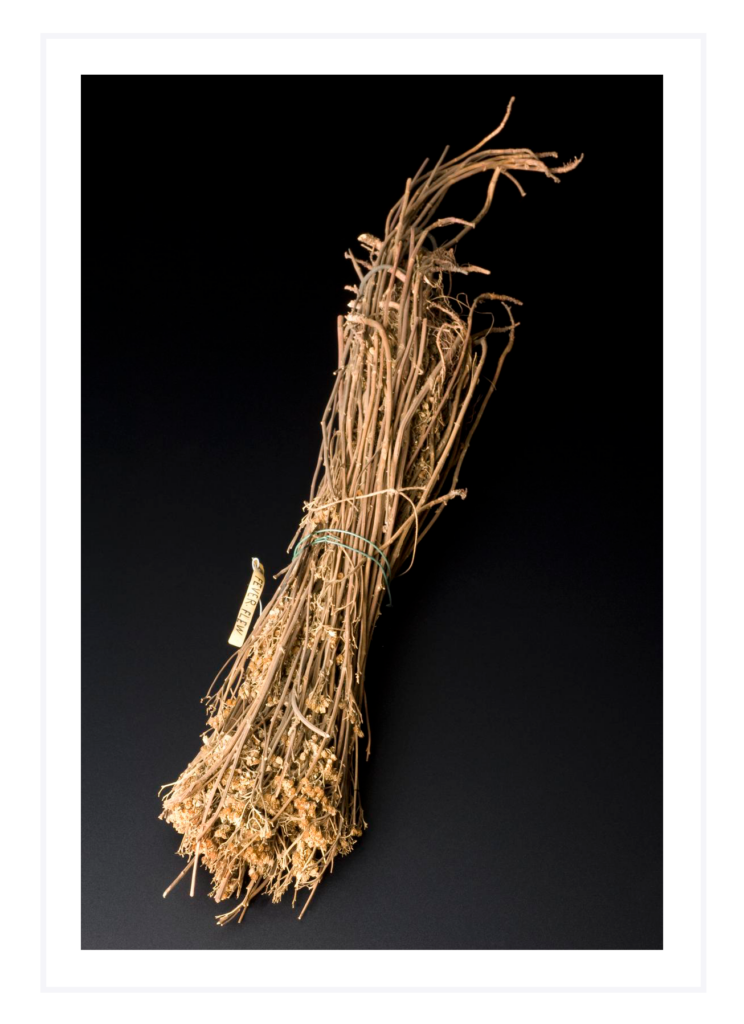
Hysteria was not just a European phenomenon. In the Middle East, in order to treat hysteria, you may have been prescribed these herbs.
However, the herbs were also utilised as an abortion treatment, helping women throughout the century.
Bunch of herbs: feverfew variety
Middle East (?)
1871-1920
Image source:https://collection.sciencemuseumgroup.org.uk/objects/co193704/bunch-of-feverfew-herbs-middle-east-1871-1920-herb

Now imagine you are a woman in 2023. Perhaps you have extreme cramps during your period, or severe mood swings due to hormonal changes. Maybe you are simply over the age 50 and are experiencing some of the many symptoms of the menopause. To this day there is a clear lack of research about women’s health, leading to misdiagnosis and the continued sale of patent medicines which lack scientific evidence…
Girls as young as 11 years old […] with symptoms of serious conditions [are told by GPs to] put up with this pain or will even be belittled for having a low pain threshold.’
-Welsh government report, 2022
PATENT MEDICINES
Women’s Health Evening Primrose Oil
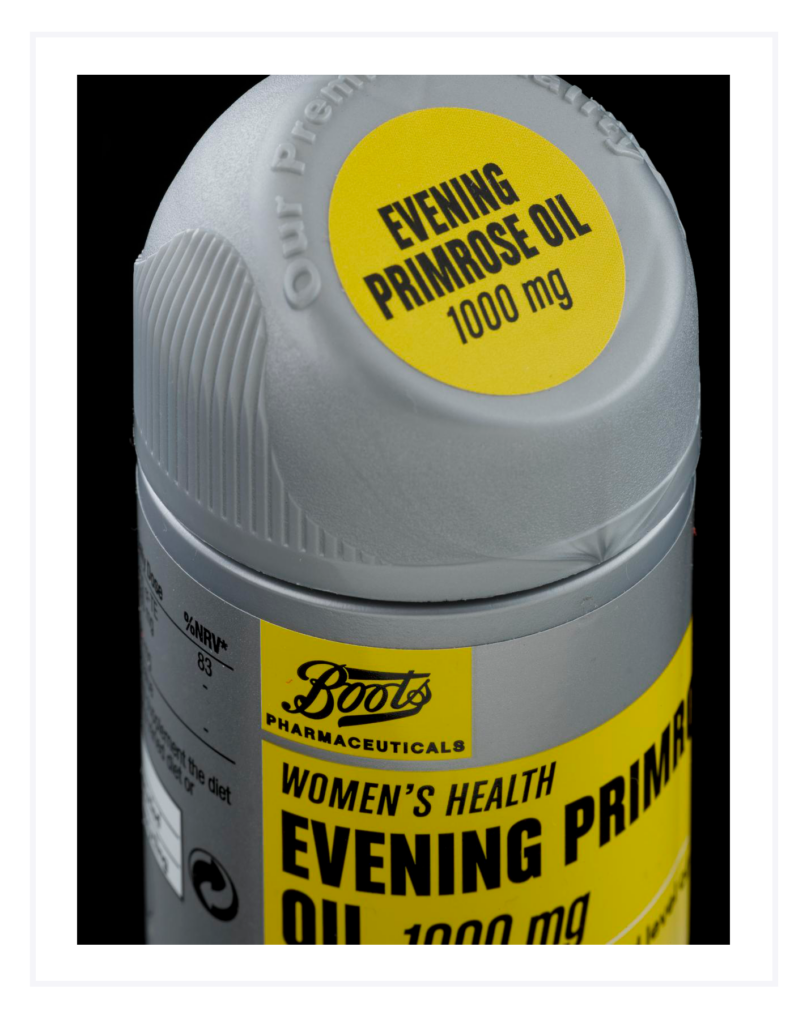
For the current medical situation of women, the stigma of menstruation still exists. You may be required to pay for medications that have not been scientifically proven to be effective in relieving the so-called “symptoms,” like women’s health evening primrose oil.
United Kingdom
By Boots The Chemists
2010-2018
MEDICINE BOOK
《景岳全书》<Complete Works of Jingyue>
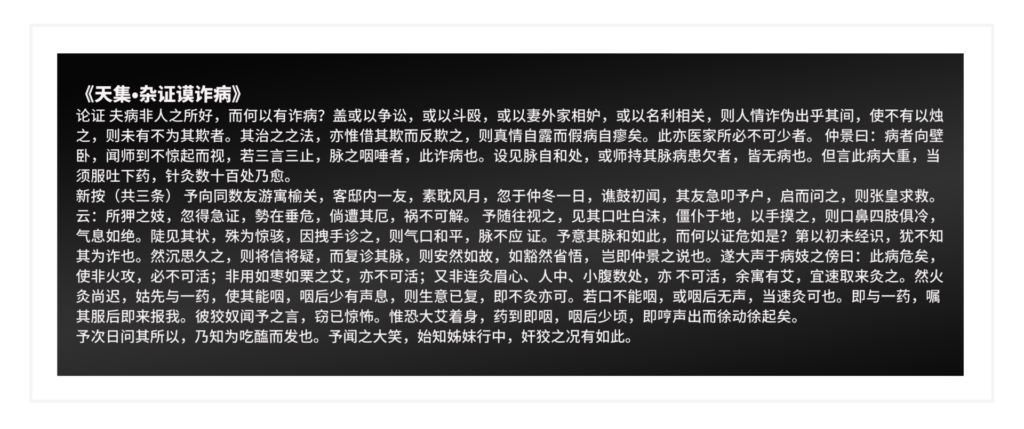
Image source:A transcription from National Digital Library of China. http://read.nlc.cn/yuewen/read?id=15651&ccid=10727555454570179&cTitle=第116章
COPYRIGHT

Images used from Science Museum Group, The Wellcome Collection, and The National Library of China following licenses ‘CC BY-NC-SA 4.0’ and ‘CC0 1.0 DEED’.
Image Sources
Science Museum Group
https://www.sciencemuseumgroup.org.uk/
Wellcome Collection
https://wellcomecollection.org
National Library of China
THANKS

This exhibition was created using collections from The Science Museum Group and The Wellcome collection, as well as referencing a book from The National Library of China as our loaned object.
Thank you to these organisations for helping us raise awareness around this issue of hysteria’s shadow in health care.
Leah Coxon, Madeleine Minall, Hanlin Liu, Xianghai Zeng, Yuanzi Chai, Yujie Chang